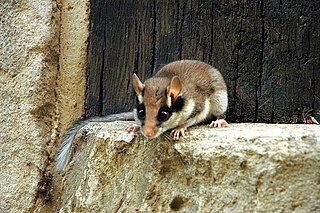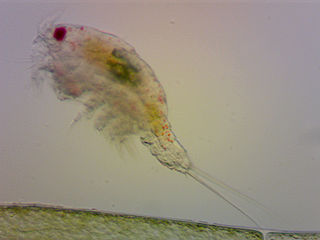
There are 38 subspecies of Canis lupus listed in the taxonomic authority Mammal Species of the World. These subspecies were named over the past 250 years, and since their naming, a number of them have gone extinct. The nominate subspecies is the Eurasian wolf.

Kikuchi disease was described in 1972 in Japan. It is also known as histiocytic necrotizing lymphadenitis, Kikuchi necrotizing lymphadenitis, phagocytic necrotizing lymphadenitis, subacute necrotizing lymphadenitis, and necrotizing lymphadenitis. Kikuchi disease occurs sporadically in people with no family history of the condition.

The Hokkaido wolf, also known as the Ezo wolf and in Russia as the Sakhalin wolf, is an extinct subspecies of gray wolf that once inhabited coastal north-east Asia. Its nearest relatives were the wolves of North America rather than Asia. It was exterminated in Hokkaido during the Meiji Restoration period, when American-style agricultural reforms incorporated the use of strychnine-laced baits to kill livestock predators. Some taxonomists believe that it survived up until 1945 on the island of Sakhalin. It was one of two subspecies that were once found in the Japanese archipelago, the other being the Japanese wolf.

The allied rock-wallaby or Weasel rock-wallaby is a species of rock-wallaby found in northeastern Queensland, Australia. It forms part of the P. lateralis/penicillata species complex and is very similar to six other species of rock-wallaby found in this area; these include the Cape York rock-wallaby, the unadorned rock-wallaby, the Herbert's rock-wallaby, the Godman's rock-wallaby, the Mareeba rock-wallaby and the Mount Claro rock-wallaby.

Zimmer's flatbill or the yellow-margined flatbill is a species of bird in the tyrant flycatcher family Tyrannidae. It is found in humid forest in southern Central America, and the Chocó and Amazon in South America.

Eliomys is a genus of rodent in the family Gliridae.
Arctodiaptomus is a genus of copepods in the family Diaptomidae, containing the following species:

Attheyella is a genus of copepods in the family Canthocamptidae, containing the following species:
Ceuthonectes is a genus of copepods in the family Canthocamptidae. It includes the Slovenian endemic species C. rouchi, which is listed as a vulnerable species on the IUCN Red List. Ceuthonectes contains the following species:
Elaphoidella is a genus of freshwater copepods in the family Canthocamptidae. It contains over 200 species, including three classified as vulnerable species by the IUCN – three endemic to Slovenia and one endemic to the United States. In total, the genus Elaphoidella contains the following species:

Diaptomidae is a family of freshwater pelagic copepods. It includes around 50 genera:

Canthocamptidae is a family of copepods. Most of the 700 species are confined to fresh water, although there are also marine species. It contains the following genera:
Cletocamptus is a genus of marine and brackish-water copepods, containing the following species:

Nacholapithecus kerioi was an ape that lived 14-15 million years ago during the Middle Miocene. Fossils have been found in the Nachola formation in northern Kenya. The only member of the genus Nacholapithecus, it is thought to be a key genus in early hominid evolution. Similar in body plan to Proconsul, it had a long vertebral column with six lumbar vertebrae, no tail, a narrow torso, large upper limbs with mobile shoulder joints, and long feet.

Daphnia is one of the three subgenera of the genus Daphnia, the others being Australodaphnia and Ctenodaphnia.

The purple-backed fairywren is a fairywren that is native to Australia. Described by Alfred John North in 1901, it has four recognised subspecies. In a species that exhibits sexual dimorphism, the brightly coloured breeding male has chestnut shoulders and azure crown and ear coverts, while non-breeding males, females and juveniles have predominantly grey-brown plumage, although females of two subspecies have mainly blue-grey plumage. Distributed over much of the Australian continent, the purple-backed fairywren is found in scrubland with plenty of vegetation providing dense cover.
The Goldfields spiny-tailed gecko is a species of lizard in the family Diplodactylidae. The species is endemic to Australia.

Eurytemora is a genus of copepods in the family Temoridae. The World Register of Marine Species lists the following species:
Mioeuoticus is an extinct genus of lorisid primates from the Miocene of East Africa. It is the only genus in the subfamily Mioeuoticinae. Mioeuoticus was a relatively small, potto-sized animal with an omnivorous diet consisting of fruit and insects.













